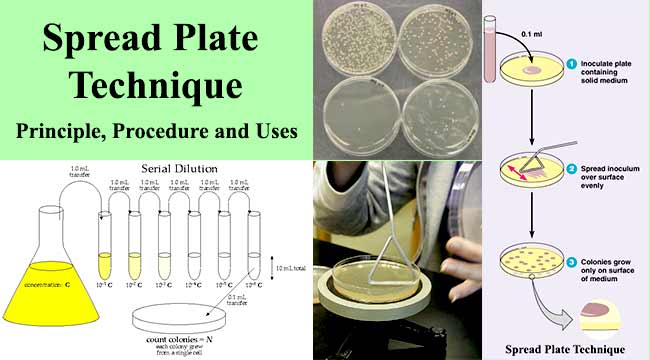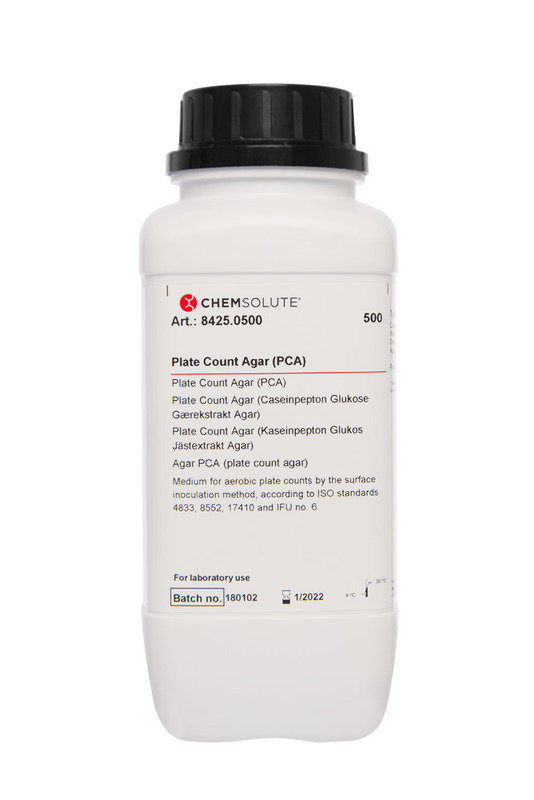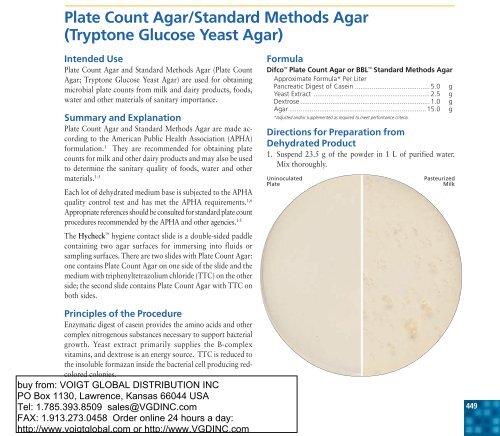This means that the sample is not applied on the agar plate but the agar plate is pressed directly on a surface for sampling. Plate count technique which is based on reproduction of bacterial cells on agar plates is the traditional method used for quality assurance of probiotic products.
Lab6enumeration

Spread Plate Technique Principle Procedure And Uses

Spread Plate Technique Principle Procedure Results Microbe Online
To count phage we spread 100 - 400 phage particles mixed with a very large number of host bacterial cells over the surface of the agar and incubate the plate.
Agar plate count method. The colony becomes visible to the naked eye and the number of colonies on a plate can be counted. This technique typically is used to separate microorganisms contained within a small sample volume which is spread over the surface of an agar plate resulting in the formation of discrete colonies distributed evenly across the agar surface when the appropriate. The streak plate technique is the most popular method for isolating specific bacteria from a sample containing a mixture of microorganisms.
Formation of Discrete Bacterial Colonies for Plate Counts Enrichment Selection or Screening. The modern streak plate method has progressed from the efforts of Robert Koch and other. Plate count agar PCA is a bacteriological substrate used for determination of the total number of live aerobic bacteria in a sample.
To be effective the dilution of the original sample must be arranged so that on average between 30 and 300 colonies of the target bacterium are grown. Then the percentage of dead cells is calculated relatively to the growth control by determining the number of living cells CFUmL of each tube using the agar plate count method. Both methods are growth based hence.
To be effective the dilution of the original sample must be arranged so that on average between 30 and 300 colonies of the target bacterium are grown. Add 12-15 ml plate count agar cooled to 45 1C to each plate within 15 min of original dilution. To be effective the dilution of the original sample must be arranged so that on average between 30 and 300 colonies of the target bacterium are grown.
4 7 How is the streak plate method done. Place the bottles with semi-tightened caps in an autoclave set to 121C for 20 min to sterilize the solutions. The amount of bacteria is expressed as colony forming units per gram CFUg in solid samples and per ml.
Add 3 g of agar power to the bottom agar bottle to make a 15 agar solution for the solid agar. Generally the bactericidal effect is obtained with a lethality percentage of 90 for 6 h which is equivalent to 999 of lethality for 24 h. Pour plate and Spread plate are two techniques in microbiology to facilitate the enumeration of microbial cells in a sample.
A successful spread plate will have a countable number of isolated bacterial colonies evenly distributed on the plate. The viable colonies that appear on the agar plates are expressed as CFU per 1 ml colony forming unit per milliliter of the sample for liquids or CFU per 1 g colony forming unit per one gram of the sample for solids. The plate count method or spread plate relies on bacteria growing a colony on a nutrient medium.
The plate count method relies on bacteria growing a colony on a nutrient medium so that the colony becomes visible to the naked eye and the number of colonies on a plate can be counted. Add 12 g of agar power to the top agar bottle to make a 06 agar solution for soft agar. Usually the Streak plate method is done by streaking the specimen directly onto the Agar media plates but in some cases when the there is the more dense population of the organism in the specimen is suspected that a serial dilution of the specimen is done and then the diluted specimen is streaked onto the solidified agar media plates.
The purpose of the streak plate method is to produce an isolated colony of an organism on the agar plate. The spread plate can be used for quantitative work colony counts but see Note 1. In comparison with the PCA Plate Count Agar TSA is T.
Summary Pour Plate vs Spread Plate. Then the percentage of dead cells is calculated relatively to the growth control by determining the number of living cells CFUmL of each tube using the agar plate count method. Significance of Streak Plate Method.
The plate count method or spread plate relies on bacteria growing a colony on a nutrient medium. Streak plate technique is used to grow bacteria on a growth media surface so that individual bacterial colonies are isolated and sampled. In microbiology streaking is a technique used to isolate a pure strain from a single species of microorganism often bacteriaSamples can then be taken from the resulting colonies and a microbiological culture can be grown on a new plate so that the organism can be identified studied or tested.
The main difference between Plaque Assay and Colony-Counting is that to count bacteria we spread about 100 - 400 bacteria over the surface of the agar and incubate the plate. Streak a known volume of urine on an agar plate incubate and perform a. The semiquantitative method is a quick and easy way to semiquantitate the concentration of bacteria in a urine or sterile body fluid sample.
The 3M Petrifilm Rapid E. From this dilution one-tenth ml is plated using 25 ml. The method which counts colony forming units is referred as standard plate count.
Coli Coliform Count REC Plate is a selective and differential sample-ready-culture medium system which contains proprietary nutrients a cold-water-soluble gelling agent 5-bromo-4-chloro-3-indolyl-D-glucuronide BCIG an indicator of glucuronidase activity and a tetrazolium indicator that facilitates colony enumeration. It is not a selective medium. Agar richer in nutrients and containing the Tween and Lecithin for the inactivation of inhibitory substances.
The spread plate method is a technique to plate a liquid sample containing bacteria so that the bacteria are easy to count and isolate. Using any method you choose solve the problem. For milk samples pour an agar control pour a dilution water control and pipet water for a.
Generally the bactericidal effect is obtained with a lethality percentage of 90 for 6 h which is equivalent to 999 of lethality for 24 h. Measuring the microbial count using RIDASTAMP. One-tenth ml of this dilution is pipetted into a 99 ml dilution blank.
This is another quantitative microbiological plate test but it functions as a so-called contact plate. Viable count is the number of bacteria or clumps of bacteria per cm 3. Furthermore solidified agar plates are necessary to perform spread plate whereas liquid molten agar media are necessary for pour method.
Here is another sample problem. Culture-based analysis enables determining the number of bacterial cells able to grow on the medium applied and their identification. Isolation of the organism is a must in a mixed culture especially if you need to thoroughly study the colony morphology of a particular organism.
The colony becomes visible to the naked eye and the number of colonies on a plate can be counted. One ml of a bacterial culture is pipetted into a 9 ml dilution blank. The spread plate method uses a tool called a plate spreader or hockey stick.
The Rodac plates can be ordered together as a SET Type S E and T 10 plates per type or per roll 10 plates of a specific type. An alternative to Compact Dry is the RIDASTAMP. To insure a countable plate a series of dilutions should be platedThe pour plate method of counting bacteria is more precise than the streak plate method but on average it will give a lower count as heat-sensitive microorganisms may die when they come contact with hot molten agar medium.
If the dilution and volume of the inoculum are known volume is usually 01cm 3 you can determine the viable count of the sample.
Measuring Bacterial Growth

Serial Dilution Techniques And Requirements Iul Instruments

Plate Count Agar Pca For Plate Count Of Aerobic Microorganisms According To Iso Standards 4833 8552 17410 And Ifu No 6 Th Geyer

Plate Count Agar Standard Methods Agar Voigt Global Distribution

Total Viable Count An Overview Sciencedirect Topics
Drop Plate Method For Counting Biofilm Cells Instructions For Students

Counting Bacteria Boundless Microbiology

Aerobic Plate Count Archives Consultglp
